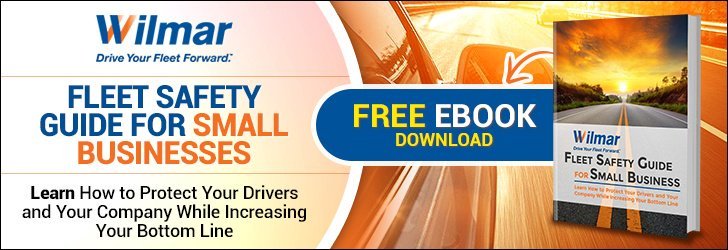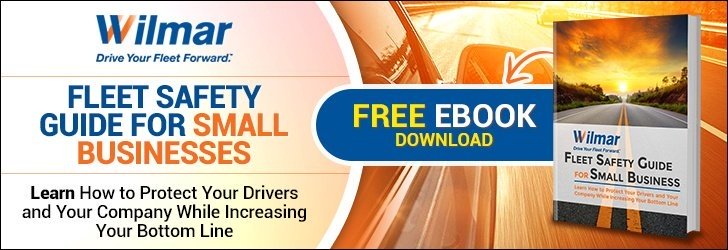
You run a company with a fleet of vehicles. Your drivers are out on the road every day, providing services, transporting goods and people. Safety should always be your top priority. But how safe is your fleet today, really? Have you examined your current safety practices recently? Do you know where you stand when it comes to accident rates, compliance, and overall readiness? If not, it's time for an assessment.
In this article, we'll walk through the key areas you need to evaluate to determine the safety status of your fleet. We'll look at safety statistics, maintenance checks, driver training, and more. Our goal is to help you identify any gaps that exist and start mapping out an action plan for improvement. At the end, you'll have a clear picture of where your fleet stands on safety and what steps to take next. So let's get started!
Performing a Fleet Safety Audit
Assess Your Current Practices
Are you confident your drivers are operating safely? The first step is taking an honest look at your existing policies and procedures. Gather data on incidents, maintenance records, driver training programs - anything related to on-road safety.
Identify Risk Areas
With that information in hand, you can start pinpointing potential risks. Maybe you have an aging vehicle inventory prone to breakdowns. Or drivers aren't getting enough ongoing training. Dig into the nitty-gritty to flag vulnerabilities.
Create an Action Plan
Once you know your fleet's weak spots, it's time to address them head-on. Develop concrete steps for:
-
Upgrading equipment
-
Enhancing driver education
-
Tightening protocols
Prioritize the biggest safety gaps first. But also look for quick wins you can implement easily.
Bring in Reinforcements
Don't go it alone - get buy-in from your team and leadership. Their perspective is invaluable for spotting blind spots. You may even want to engage outside consultants for an objective third-party assessment.
An ongoing commitment to comprehensive auditing is key to running a truly safe fleet operation. It provides a current snapshot while charting a course for continuous improvement.
Implementing a Fleet Safety Program
Assign a Safety Leader
You need someone to spearhead safety initiatives across your fleet. Appoint a safety manager or director responsible for developing policies, overseeing training, investigating incidents, and promoting a culture of safety.
Establish Safety Policies
Clearly documented policies set expectations for safe driving behavior. Cover key areas like:
-
Distracted driving rules (no phone use, eating, etc.)
-
Vehicle inspection procedures
-
Incident reporting requirements
-
Discipline for safety violations
Provide Ongoing Training
Safe driving takes continuous reinforcement. Require annual or semi-annual training covering:
-
Defensive driving techniques
-
New vehicle technologies
-
Policy and procedural updates
-
Sharing "lessons learned" from past incidents
Invest in Safety Technologies
New technologies can significantly improve fleet safety:
-
Vehicle tracking/telematics to monitor driving behavior
-
Dash cams and backup cameras for increased visibility
-
Collision avoidance systems and lane departure warnings
-
Electronic logging devices for hours-of-service compliance
Cultivate a Safety Culture
Ultimately, instilling a safety mindset is crucial. Recognize and reward safe drivers. Involve employees in developing safety practices. Emphasize that safety protects them, their vehicles, and the public.
By implementing policies, training, technologies and promoting safety values, you build a program protecting your fleet, employees and bottom line.
Continually Improving Fleet Safety
Prioritize Driver Training
Your drivers are the backbone of your fleet operations. Investing in regular safety training reinforces best practices and keeps them sharp. Cover defensive driving techniques, proper vehicle inspections, and protocols for various scenarios.
Leverage Telematics Data
Modern telematics systems provide a wealth of data on driver behavior and vehicle performance. Identify risk areas like hard braking, excessive idling, and speeding trends. Use this intel to coach drivers and optimize routes.
Encourage Open Communication
Foster an environment where drivers feel comfortable reporting issues or near-misses. Their on-the-ground perspective is invaluable for pinpointing areas for improvement and preventing future incidents.
Streamline Maintenance
Breakdowns put your drivers and assets at risk. Stay on top of preventative maintenance schedules to ensure vehicles operate safely. Automate service alerts and integrate with your maintenance team's workflow.
Review Policies Regularly
As regulations evolve and technology advances, your fleet policies should keep pace. Continually audit guidelines on areas like driver qualifications, hours-of-service rules, and incident reporting procedures. Seamless compliance minimizes risks.
By making safety an ongoing priority across operations, you'll safeguard your drivers, assets, and reputation. Consistent focus on training, data insights, open dialogue, maintenance rigor, and updated policies will reinforce a strong safety culture.
In Closing
So there you have it - a quick rundown of the key areas to focus on when assessing the safety readiness of your fleet. By taking the time to analyze your current processes and procedures, you'll uncover any weak spots that could be putting your drivers and vehicles at risk.
Don't wait for an incident to happen to spur you into action. Be proactive now so you can feel confident that your fleet and team are operating as safely as possible. Do the work on the front end, and you'll reap the rewards of peace of mind and a strong safety record. Your drivers, passengers, and bottom line will thank you.








